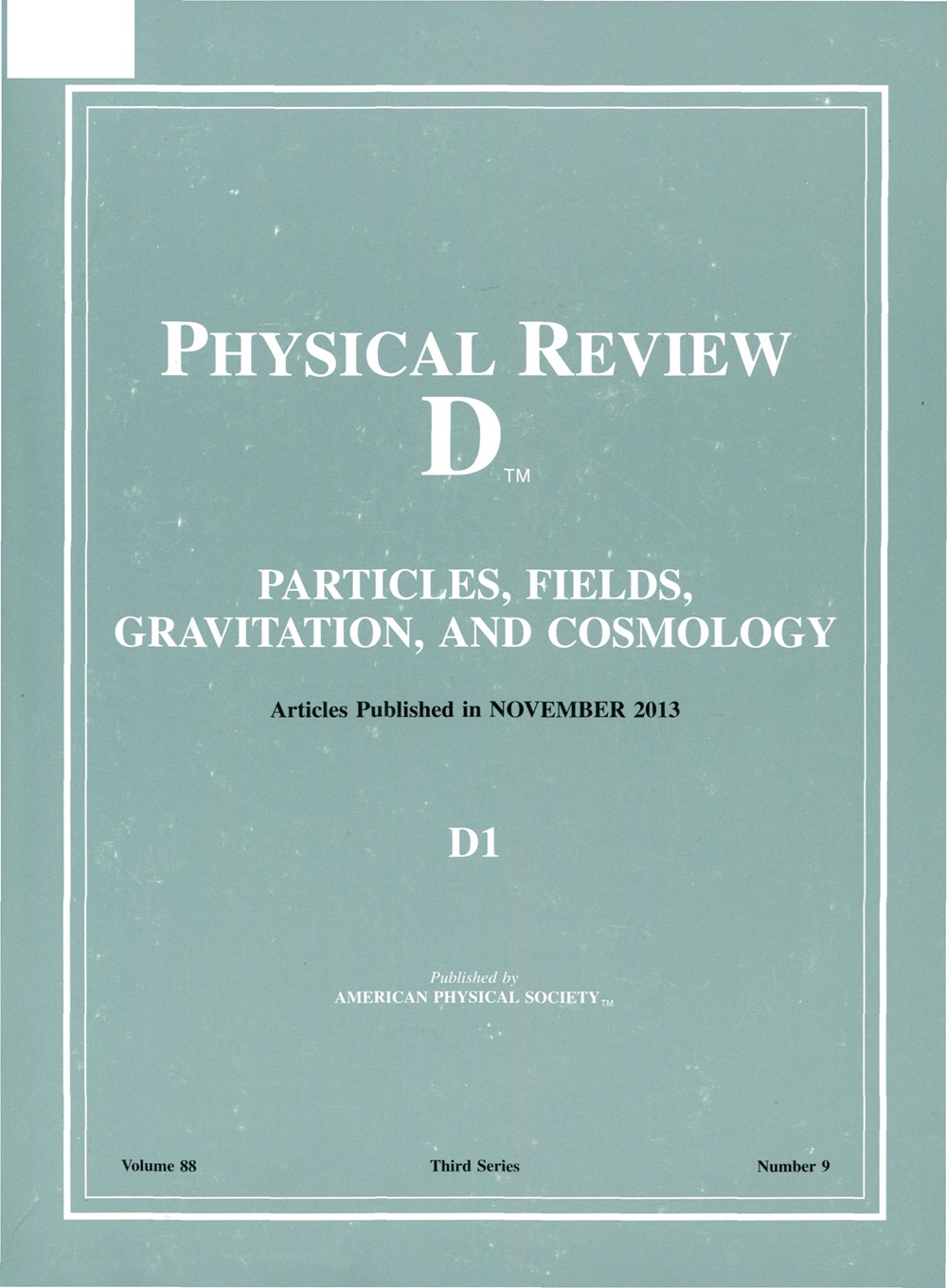探索SMEFT及以后的阿贝尔-非阿贝尔动力学混合
IF 5.3
2区 物理与天体物理
Q1 Physics and Astronomy
引用次数: 0
摘要
我们在标准模型有效场理论(SMEFT)的框架内探讨了一种涉及阿贝尔-非阿贝尔动力学混合的新场景,并将其推广到实三重态标量场。在SMEFT中,这种混合仅由涉及标准模型希格斯双重态的6维算符引起,而实际三重态标量场引入了额外的5维算符。我们推导了对电弱规范玻色子性质的修正,并利用电弱精度数据施加约束。在SMEFT中,我们发现大型正负电子对撞机的z极数据对动力学混合参数施加了严格的约束,要求它小于0(10−4),这对应于大约10 TeV的新物理尺度。在SMEFT+三重态场景中,可以通过相当大的三重态真空期望值显著放松约束,同时在精细调整的参数空间中保持监护对称性。圆形正电子对撞机的未来测量可以探测到更小一个数量级的动力学混合参数。讨论了希格斯信号强度数据、b→μ+μ−和μ子(g−2)的约束。2025年由美国物理学会出版本文章由计算机程序翻译,如有差异,请以英文原文为准。
Exploring Abelian–non-Abelian kinetic mixing in SMEFT and beyond
We explore a novel scenario involving Abelian–non-Abelian kinetic mixing within the framework of the Standard Model effective field theory (SMEFT) and its extension with a real triplet scalar field. In SMEFT, this mixing arises exclusively from a dimension-6 operator involving the Standard Model Higgs doublet, while the real triplet scalar field introduces an additional dimension-5 operator. We derive the modifications to electroweak gauge boson properties and impose constraints using electroweak precision data. In SMEFT, we find that Z-pole data at the Large Electron–Positron Collider imposes a stringent constraint on the kinetic mixing parameter, requiring it to be less than O ( 10 − 4 SMEFT + triplet B s → μ + μ − g − 2 Published by the American Physical Society 2025
求助全文
通过发布文献求助,成功后即可免费获取论文全文。
去求助
来源期刊

Physical Review D
物理-天文与天体物理
CiteScore
9.20
自引率
36.00%
发文量
0
审稿时长
2 months
期刊介绍:
Physical Review D (PRD) is a leading journal in elementary particle physics, field theory, gravitation, and cosmology and is one of the top-cited journals in high-energy physics.
PRD covers experimental and theoretical results in all aspects of particle physics, field theory, gravitation and cosmology, including:
Particle physics experiments,
Electroweak interactions,
Strong interactions,
Lattice field theories, lattice QCD,
Beyond the standard model physics,
Phenomenological aspects of field theory, general methods,
Gravity, cosmology, cosmic rays,
Astrophysics and astroparticle physics,
General relativity,
Formal aspects of field theory, field theory in curved space,
String theory, quantum gravity, gauge/gravity duality.
 求助内容:
求助内容: 应助结果提醒方式:
应助结果提醒方式:


